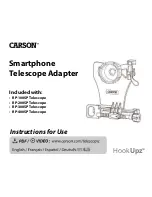
Harness User’s manual
S
UP’AIR
_
PIXAIR
Page 25
Throwing the reserve parachute.
It is strongly recommended to frequently check your reserve parachute handle location while in flight. This exercise should be executed
instinctively and will increase your chances of a successful parachute extraction in case of an emergency.
Estimate your AGL ( Altitude Above Ground Level ) which if high enough may make it worth trying to bring your wing back to a normal flying
configuration. If in doubt quickly deploy your emergency parachute.
Deploying a rescue parachute should only be done in an emergency.
With a strong lateral and then vertical tug, pull the handle towards you and then throw the parachute away from you ( including the container and its
handle ) toward a clear unobstructed area of the sky. As soon as the parachute deploys, bring as much of the glider as possible toward you by pulling
symmetrically on the “C” or “D” risers or on the toggles/brakes.
Be prepared to land by adopting an upright position with knees together and legs slightly bent. Prepare to roll down, hands on your chest, ankles
together with pivoting hips and shoulders in a Paragliding Landing Fall (PLF) configuration.
Using the reserve parachute.
Towing
To takeoff under tow you must be equipped with a quick release specially designed for the task.
Connect the towing release system to the main carabiner attachment points in accordance to manufacturer recommendations.
Before towing you should consult with a competent towing outfit about safety recommendations.
Mandatory controls.
Mandatory biannual inspection.
- Ascertain parachute deployment functionality by pulling the handle to activate a clean POD extraction sequence.
- Inspect the harness for wear and tear.
Annual check
- An annual deployment and repacking of the reserve parachute must be conducted by competent and certified personnel.






































